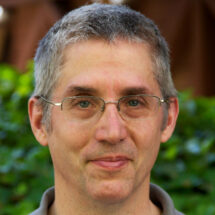
Eric Gouaux will give the 2018 Max Perutz Lecture on Thursday 29th November 2018 at 4pm in the Max Perutz Lecture Theatre at the LMB. The lecture entitled “How synapses work: Architecture and mechanism of neurotransmitter receptors and transporters” is open to anyone in the local area who is interested in attending.
Eric is currently a Senior Scientist at the Vollum Institute of Oregon Health & Science University. He is also an investigator with the Howard Hughes Medical Institute. His research concentrates on developing molecular mechanisms for the function of receptors and transporters at chemical synapses by utilizing electron cryo-microscopy, x-ray crystallography, and electrophysiology.
Eric completed his PhD in chemistry at Harvard University before continuing his postdoctoral studies at MIT. In 1993 he was appointed Assistant Professor at the University of Chicago Department of Biochemistry and Molecular Biology. In 2005 Eric moved to Oregon Health & Science University as a senior scientist at the Vollum Institute. He was appointed the Jennifer and Bernard Lacroute Term Chair in Neurosciences Research in 2015. He has won a number of awards including the Anatrace Membrane Protein Award, from the Biophysical Society, and is a member of the National Academy of Sciences.
Lecture abstract
Synapses are the electrical switches of the brain, underpinning much of the signaling between neurons and directly involved in nearly all aspects of innate and learned behaviors. The key signaling machinery – neurotransmitter receptors and transporters – are also implicated in a large number of neurological diseases or disorders and are the targets of multiple therapeutic agents and illicit substances. Synapses are sites of three choreographed processes – calcium-dependent release of neurotransmitter into extracellular spaces, detection of neurotransmitter by ion channels, and removal of neurotransmitter by transporters. The talk will focus on the last two activities.
On the one hand, binding of the released neurotransmitters to transmitter-gated ion channels initiates local changes in membrane potential and these changes, when summed, initiate action potentials that are propagated throughout neuronal circuits. On the other hand, the ion channels also allow for calcium entry into cells, thus initiating chemical signaling via calcium-dependent pathways. Quenching of the neurotransmitter within the synapse and surrounding spaces is accomplished by membrane-bound transporters, molecular machines that harness pre-existing ion gradients to ‘pump’ transmitter into cells, thereby enabling subsequent cycles of neurotransmitter signaling.
It will illuminate how neurotransmitters transduce binding events into the opening of ion channel-coupled receptors, and on the fascinating mechanisms by which neurotransmitter transporters take-up transmitter from the synaptic cleft and are modulated by clinically relevant drugs.
Background information
The Max Perutz Lecture is named in honour of LMB Nobel Laureate Max Perutz. It is one of a series of named lectures organised by the LMB to be given by eminent scientists from around the world. Max Perutz arrived at the Cavendish Laboratory in Cambridge in 1936, to work in the field of X-ray crystallography. This move would lead to him becoming a pioneer in the new field of molecular biology, co-founding a world-class research laboratory and developing a technique to unlock the structures of proteins. Max played a key role in the history of the LMB. He was Director of the ‘MRC Unit for Research on the Molecular Structure of Biological Systems’ when it was established in 1947; and when the unit became the MRC Laboratory of Molecular Biology (LMB) in 1962, he became its first Chairman. Max Perutz officially retired as Chairman of the LMB in 1979, having overseen the development of the MRC unit into a first class research laboratory. He died in Cambridge on 6 February 2002, aged 87.
Further references
Eric Gouaux Lab
Max Perutz biography
LMB Named Lectures
Poster for the Lecture